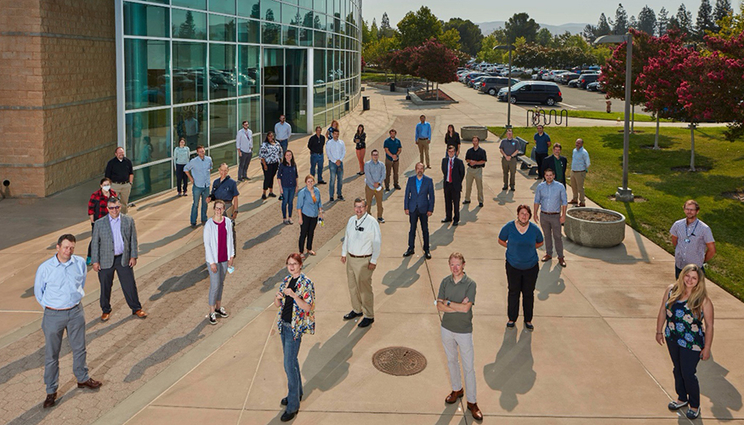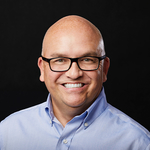R-cubed: Revolutionizing the present, anticipating the future
 (Download Image)
(Download Image)
Lawrence Livermore National Laboratory hosted the first-ever Post-Detonation Rapid Response Research Venture meeting Aug. 17-19. The team includes members from throughout the Department of Energy and the National Nuclear Security Administration.
The Post-Detonation Rapid Response Research Venture — also known as R-cubed or R3 — is combining basic research and development of emergent technologies, predictive capabilities and systems assessment to revolutionize the speed and flexibility of technical nuclear forensic (TNF) response to nuclear events.
The venture is a multi-laboratory collaboration led by Lawrence Livermore National Laboratory (LLNL) and includes Los Alamos National Laboratory (LANL), Pacific Northwest National Laboratory (PNNL), Sandia National Laboratories, Oak Ridge National Laboratory and Idaho National Laboratory. R3 is funded by the Office of Defense Nuclear Nonproliferation Research and Development within the Department of Energy’s National Nuclear Security Administration.
R3 undertakes the challenging task of balancing evaluation of new approaches able to impact the timeliness of current operations, alongside out-of-the-box approaches with the potential to shift current paradigms. Three key areas of research and development are integrated within this venture structure, roughly mimicking TNF operations from field-based response up through provision of analytical data: Computational simulation of nuclear yield and radioactivity distributions, field-based triage and collections and fixed laboratory analyses of post-detonation debris.
The Fireball and Cloud Dynamics team, led by LLNL’s Joe Morris, seeks to predictively tie entrainment and emplacement to yield interpretation and debris composition signatures. The Screening and Triage team, led by LANL’s Doug Berning, is innovating a suite of capabilities informing collections and providing reliable early-time data. Finally, the Fixed-Laboratory Capabilities team, led by Jane Estrada from PNNL, is working to achieve timely assay of prioritized analytes and complementary data through transformational method development.
These topics and the R3 Venture are closely aligned with the Post-Detonation Signatures Venture, a related tri-laboratory project with LANL, LLNL and PNNL identifying new post-detonation debris data signatures and applications for TNF operations.
Wholly conceived and executed amid the backdrop of the pandemic, R3 was formally initiated mid-way through FY21. The team, encompassing a mixture of early career staff and staff with established operational experience, are unified in recognizing the value of strong, collaborative relationships to the success of the venture. Although virtual meetings and limited-attendance classified conference calls have been able to supplement early development of project scope and preliminary work, the R3 team overwhelmingly expressed the need for an in-person meeting to enable forthright discussion of projects within the venture and better integrate collaborations across laboratories and topic areas.
LLNL’s Kim Knight, overall R3 lead, and Tashi Parsons-Davis, lead of the LLNL R3 team, arranged and hosted the venture’s first meeting in Livermore from Aug. 17-19 that involved 40 participants from six laboratories.
“Despite the challenges posed by the pandemic, the meeting was an unqualified success, cementing multi-lab collaborations across the venture and permitting broad discussion at an appropriate level of the current state of the art and intended venture accomplishments,” Knight said.
Mini-tours of the National Atmospheric Release Advisory Center, the Nuclear and Chemical Sciences (NACS) Nuclear Counting Facility and of the tremendous variety of mass spectrometry capabilities within NACS provided opportunities to showcase LLNL’s world-class facilities and identify additional collaborations.
Holding long-delayed whole-of-team discussions in person was immensely valuable to the team, Knight said. “The meeting helped to clarify, in an appropriate classified setting, our research, our connections to operational interests, and advance a cohesive vision accompanied by essential conversations. Making the decision to hold in-person meetings, given the non-zero risk of our current circumstances, was not a decision to be taken lightly.”
Knight said the feedback from the team as well as R3’s sponsor, Tim Ashenfelter from NNSA, has been enthusiastic and overwhelmingly positive. “I greatly appreciate the caution, care and support of LLNL in hosting the R3 Team,” she added.
Contact
 Michael Padilla
Michael Padilla
[email protected]
(925) 341-8692
Related Links
NNSATags
Earth and Atmospheric ScienceAtmospheric, Earth, and Energy
Nuclear, Chem, and Isotopic S&T
Nuclear and Chemical Sciences
Global Security
Physical and Life Sciences
Defense
Threat preparedness
Nonproliferation
Featured Articles







